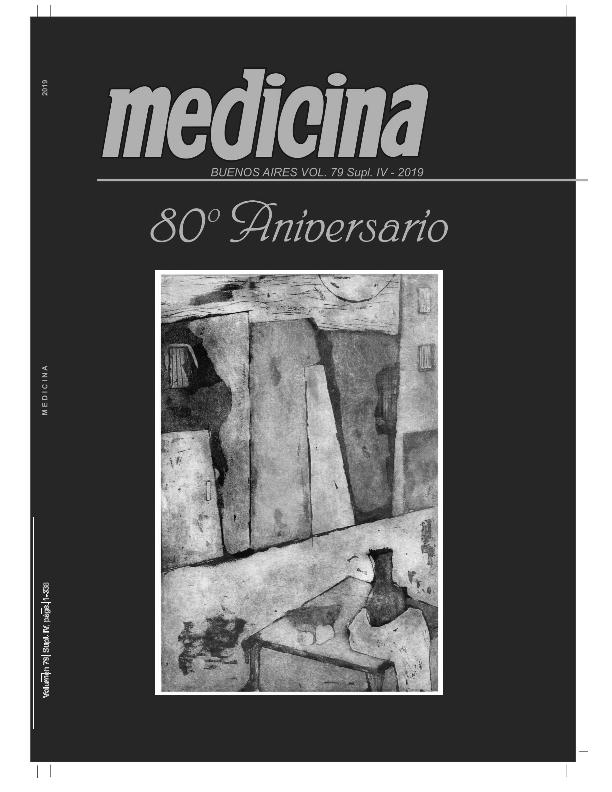Evento
Use of fish digestive extract for chicken feather degradation
Tipo del evento:
Reunión
Nombre del evento:
LXIV Reunión Anual de la Sociedad Argentina de Investigación Clínica; LI Reunión Anual de la Asociación Argentina de Farmacología Experimental; XXI Reunión Anual de la Sociedad Argentina de Biología; XXXI Reunión Anual de la Sociedad Argentina de Protozoología; IX Reunión Anual de ka Asociación Argentina de Nanomedicinas y VI Reunión Científica Regional de la Asociación Argentina de Ciencia y Tecnología de Animales de Laboratorio
Fecha del evento:
13/11/2019
Institución Organizadora:
Sociedad Argentina de Investigación Clínica;
Asociación Argentina de Farmacología Experimental;
Sociedad Argentina de Biología;
Sociedad Argentina de Protozoología;
Asociación Argentina de Nanomedicinas;
Asociación Argentina de Ciencia y Tecnología de Animales de Laboratorio;
Título de la revista:
Medicina (Buenos Aires)
Editorial:
Fundación Revista Medicina
ISSN:
0025-7680
e-ISSN:
1669-9106
Idioma:
Inglés
Clasificación temática:
Resumen
By-products from animal sources are currently used for the benefit of providing added value to production. In the poultry industry, feathers represent up to 8.5% of chicken weight and constitute an important source of protein, mainly keratin. Due to the high aminoacids content, its processing to obtain hydrolysates becomes a commercial attraction. Besides, in the fishing industry, the viscera constitute 5% of the total weight of the fish and are a waste for the environment. They are considered an alternative source of enzymes (proteases) of high commercial value by their industrial and scientific applications. In the present work an enzymatic extract from fish pyloric cecae (Pygocentrus nattereri) was assayed on feathers in order to evaluate its capacity of hydrolyzes this keratin source under different medium contiditions. Preparations of extracts were made by mechanical digestion of tissues in buffer pH 7.8, 1:5 g tissue/ml, and then centrifuged. Proteolytic activity of fish enzymatic extract (FEE) was tested using a-Nbenzoyl-DL-arginine-p-nitroanilide. For the hydrolysis, first, feathers were pre-treated with buffer 7.8, 1% 2-mercaptoethanol (2-ME), for 20 min at 100°C. Second, 7.0 U/ml FEE was added (1:5) and incubated for 6 days at 37°C. After finishing hydrolysis stage, feathers were observed at optic microscope (OM) and sobrenadants were analyzed by UV spectra. Feathers were running in parallel under different treatments, such as absence of reducing agent, heat or FEE. OM analysis showed that FEE was capable of attack the feather structure, but the pre-treatment with 2-ME and heat increased the enzymatic action. UV210-310 nm analyses reveled a major increment of absorbance at 250-280 range in those samples from feathers treated with FEE, 2-ME and heat. Results demonstrate that FEE from P. nattereri is capable of degrade the native structure of feathers, yielding free molecules of hydrolyzed keratin. This property gives FEE a potential industrial use.
Palabras clave:
Enzyme
,
Fish Pyloric Cecae
,
Keratin
Archivos asociados
Licencia
Identificadores
Colecciones
Eventos(IQUIBA-NEA)
Eventos de INSTITUTO DE QUIMICA BASICA Y APLICADA DEL NORDESTE ARGENTINO
Eventos de INSTITUTO DE QUIMICA BASICA Y APLICADA DEL NORDESTE ARGENTINO
Citación
Use of fish digestive extract for chicken feather degradation; LXIV Reunión Anual de la Sociedad Argentina de Investigación Clínica; LI Reunión Anual de la Asociación Argentina de Farmacología Experimental; XXI Reunión Anual de la Sociedad Argentina de Biología; XXXI Reunión Anual de la Sociedad Argentina de Protozoología; IX Reunión Anual de ka Asociación Argentina de Nanomedicinas y VI Reunión Científica Regional de la Asociación Argentina de Ciencia y Tecnología de Animales de Laboratorio; Mar del Plata; Argentina; 2019; 138-138
Compartir




